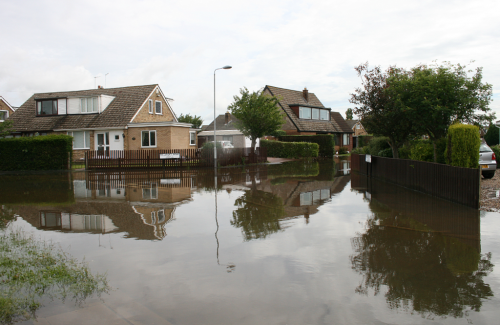Finding Flood Insurance Clients
Anywhere it rains, it can flood. That means there are potential flood insurance customers in your community. Unfortunately, many property owners have misconceptions about flood insurance and their flood risk.

Five ways to identify flood insurance clients
Flooding happens in every state and territory, that’s why it’s important you share with your clients the value of flood insurance. Here are different ways you can identify new clients and work with existing clients to sell policies and help them protect the lives they’ve built.
1. Check in with existing clients
- Do you have clients who currently have other types of insurance, but not flood insurance? If so, there are opportunities to cross-sell. It’s never too late to reach out to your clients and remind them of the value of flood insurance.
- By offering flood insurance, you can make your clients aware of a key gap in their coverage and better protect them. You can build trust and increase your potential for more sales.
- Before your area floods or in the weeks following flood conditions like heavy rains, flash floods or winter storms, reach out to existing clients who do not have flood insurance. Severe weather can help you remind your clients of the need for flood insurance.
2. Locate likely customers
If you live and work in one of the more than 22,600 communities that participate in the National Flood Insurance Program (NFIP), there are potential customers in your area.
Through consumer research and policyholder data, the NFIP has found that flood insurance customers often share the following characteristics:
With all new clients, look for opportunities to cross-sell. Many agents recommend providing a flood insurance quote with every new policy written. Not only does this help protect you from Errors & Omissions lawsuits, but it also assures clients that you’re looking out for all of their insurance needs.
3. Understand flood risk in your area
By staying up to date on your community’s FEMA flood maps, NFIP flood risk maps, and recent flood history, you can help identify clients who are at increased risk of flooding. For example:
Flood maps can help you identify potential clients, visit map updates and help your clients make informed decisions about their coverage.
4. Partner with real estate agents, financial advisors and lenders in your area
Making insurance decisions is an important step when buying a home. That’s why agents should work closely with real estate agents, financial advisors and local lenders to gain new clients.
Review the potential homebuyer questions below and be prepared to answer the following:
5. Find partners to raise flood risk awareness
When it comes to raise flood risk awareness, it’s important to build your network to amplify your message. Successful agents gain support from local partners to spread the word about flood risk, flood preparedness and the value of flood insurance. Some partners may include:
Create a marketing plan
-
Step 1: Determine your audience.
Who is your marketing campaign trying to reach?
Focus on customers who face increased flood risk, for example, market to homeowners in spring, coastal residents ahead of hurricane season, or residents in metropolitan areas.
-
Step 2: Time your marketing efforts.
Timing is key. After purchase, flood insurance policies take 30 days to go into effect. So, it's important to time your marketing efforts in advance of local flood risk factors – like spring rains, snow melt or hurricane season, even in lower risk areas.
If clients wait until severe weather arrives to buy flood insurance, it is likely too late for them to secure the coverage they need.
-
Step 3: Find channels to reach your audience.
Once you’ve identified your audience, think about where they go to get information. What does your audience read, watch or listen to? Who do they trust when considering insurance decisions?
-
Step 4: Deliver messages to your audience.
After identifying your audience and marketing channels, consider:
-
Tailoring your message to show the value of flood insurance to your target audience. New homeowners need different messages than those who just paid off their mortgage. People in high-risk areas will respond to different messages than those in low-risk zones.
-
Matching your message to the marketing channel. Social media works best with short posts, while local newspapers may need longer messages.
-
Survivor Story
When Hurricane Harvey hit, Yadira Parker’s home took on three feet of water. As a flood insurance agent, she found it sobering to experience the recovery process first hand. Thanks to the NFIP, Yadira and her clients had peace of mind and help rebuilding after the storm.
FAQs
The NFIP has identified the following flood insurance customer characteristics:
- Heightened personal financial risk: Look for parts of your community with high rates of homeowners. People in single-family homes, especially in low-lying areas, may better understand the financial risk of flooding. They may also be more likely to buy flood insurance than those in big apartment buildings.
- Heightened awareness of flood risk: Focus on customers who already know about flood risk. This could include people living near rivers, lakes, or coastal areas or those living in places that have flooded in recent years.
Communications channel examples:
- Local newspapers or community bulletins
- Local television and radio stations
- Direct mail or community flyers
- Homeowners Association newsletters or neighborhood apps
- Community events
- Social media (ex. X, Facebook, LinkedIn)
For downloadable marketing resources, visit our Resource Library and the Marketing Campaigns overview.
The NFIP has identified the following key messages:
Protect: "Protect the life you’ve built with flood insurance."
Value of flood insurance: "The average flood insurance claim payment in the past five years was about $69,000."
Cost of flooding: "Just one inch of water can cause thousands of dollars in damage to your home."
Salience: "Flood survivors know: Floods can happen anywhere."
